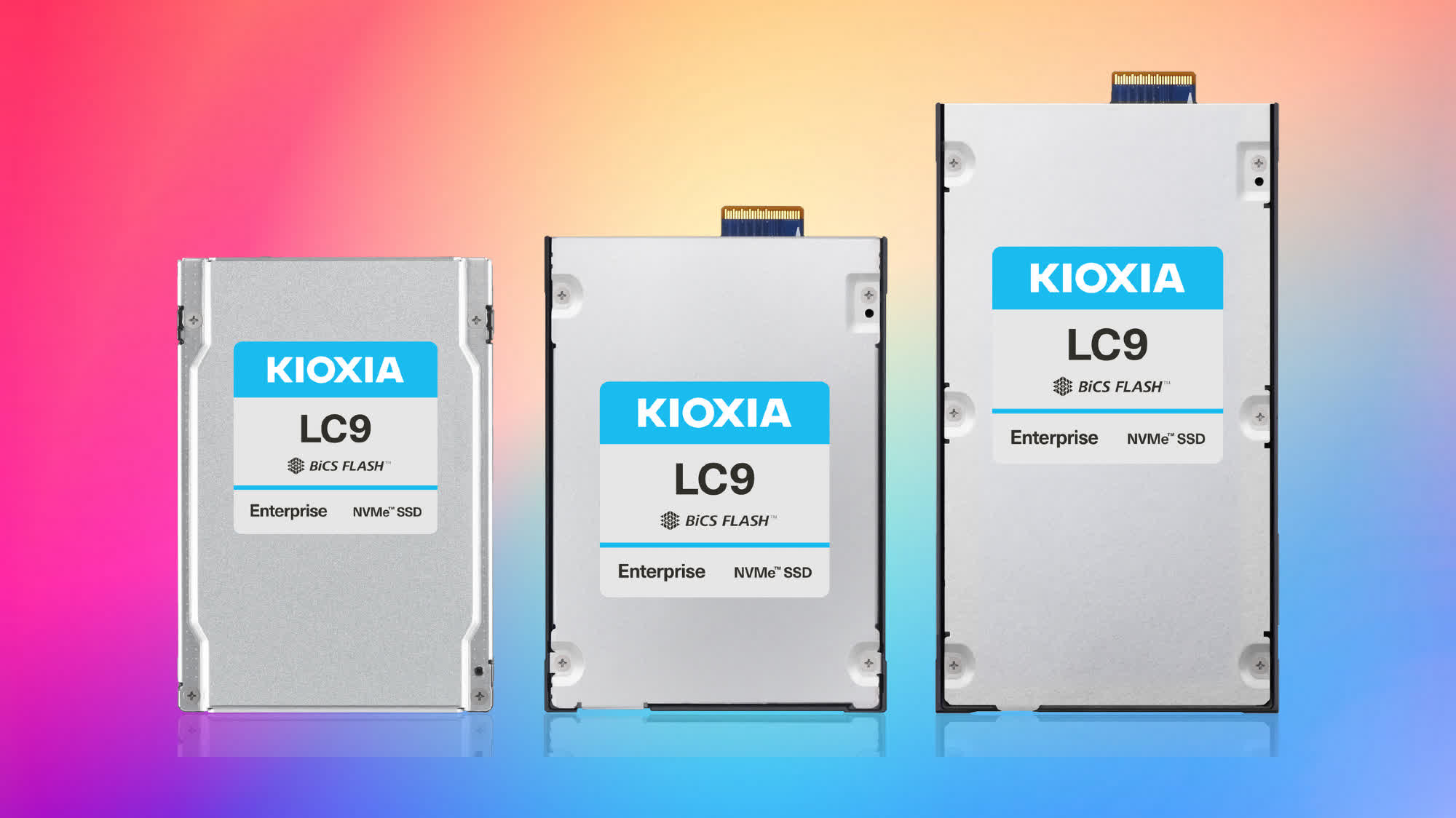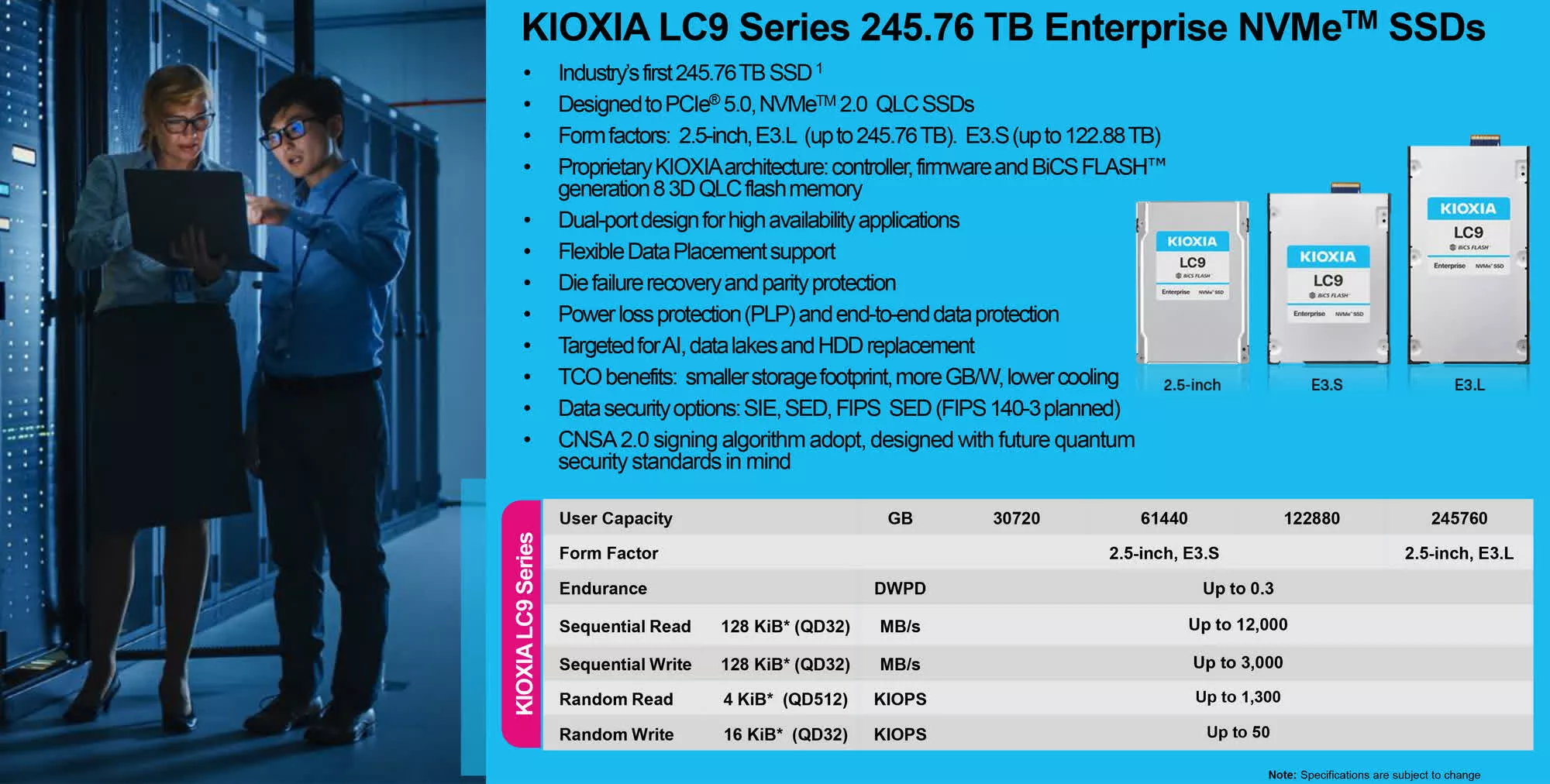What just happened? Flash memory maker Kioxia has announced a 245 TB NVMe SSD with PCIe 5.0 speeds. Built using the company's 8th-gen BiCS FLASH technology, it is the world's highest-capacity storage device and is available in both 2.5-inch and EDSFF E3.L form factors.
Part of Kioxia's LC9 series of enterprise SSDs, the new drive offers 245.76TB of capacity by stacking 32 2Tb QLC 3D flash memory dies to achieve industry-leading density. It features a proprietary NVMe 2.0 controller and supports a PCIe 5.0 x4 interface with dual-port connectivity.
Kioxia claims the drive can deliver sequential read speeds of up to 12,000 MB/s and sequential write speeds of up to 3,000 MB/s. Random performance reaches 1.3 million IOPS for reads and 50,000 IOPS for writes, while endurance is rated at 0.3 DWPD for typical hyperscale workloads.
This ultra – high-capacity SSD is made possible by advanced memory architecture and Kioxia's innovative CBA (CMOS directly Bonded to Array) technology, which packs a record 8TB of storage into each compact 154-ball BGA NAND package. The company credits its achievement to high-precision wafer processing, material design, and wire bonding technologies.
The drive is designed for hyperscale data centers and generative AI workloads, which demand high performance, power efficiency, and robust security. Kioxia claims it will help data centers optimize their IT infrastructure and reduce total operating costs by lowering overall power consumption, minimizing the number of drive slots required, and enabling more efficient cooling.
The 245TB drive is ideally suited for AI development firms that need to store massive datasets to train large language models. It can also support the creation of vector databases used in retrieval-augmented generation, a method that improves the accuracy and reliability of AI inference. All of these workloads require large volumes of fast and efficient storage.
Kioxia's LC9 series currently includes high-capacity drives of up to 122.88TB, available in 2.5-inch and E3.S form factors. All LC9 models, including the new 245TB version, come equipped with advanced security features such as SIE (Sanitize Instant Erase), SED (Self-Encrypting Drive), FIPS certification, and NVMe 2.0 and NVMe-MI 1.2c compliance. They also support the Open Compute Project (OCP) specifications.
Kioxia is currently sampling the 245TB SSD to select customers and plans to showcase the drive at the Future of Memory and Storage 2025 conference in Santa Clara, CA, from August 5-7.
Kioxia unveils world's highest-capacity SSD at 245TB, aims at hyperscale data centers

